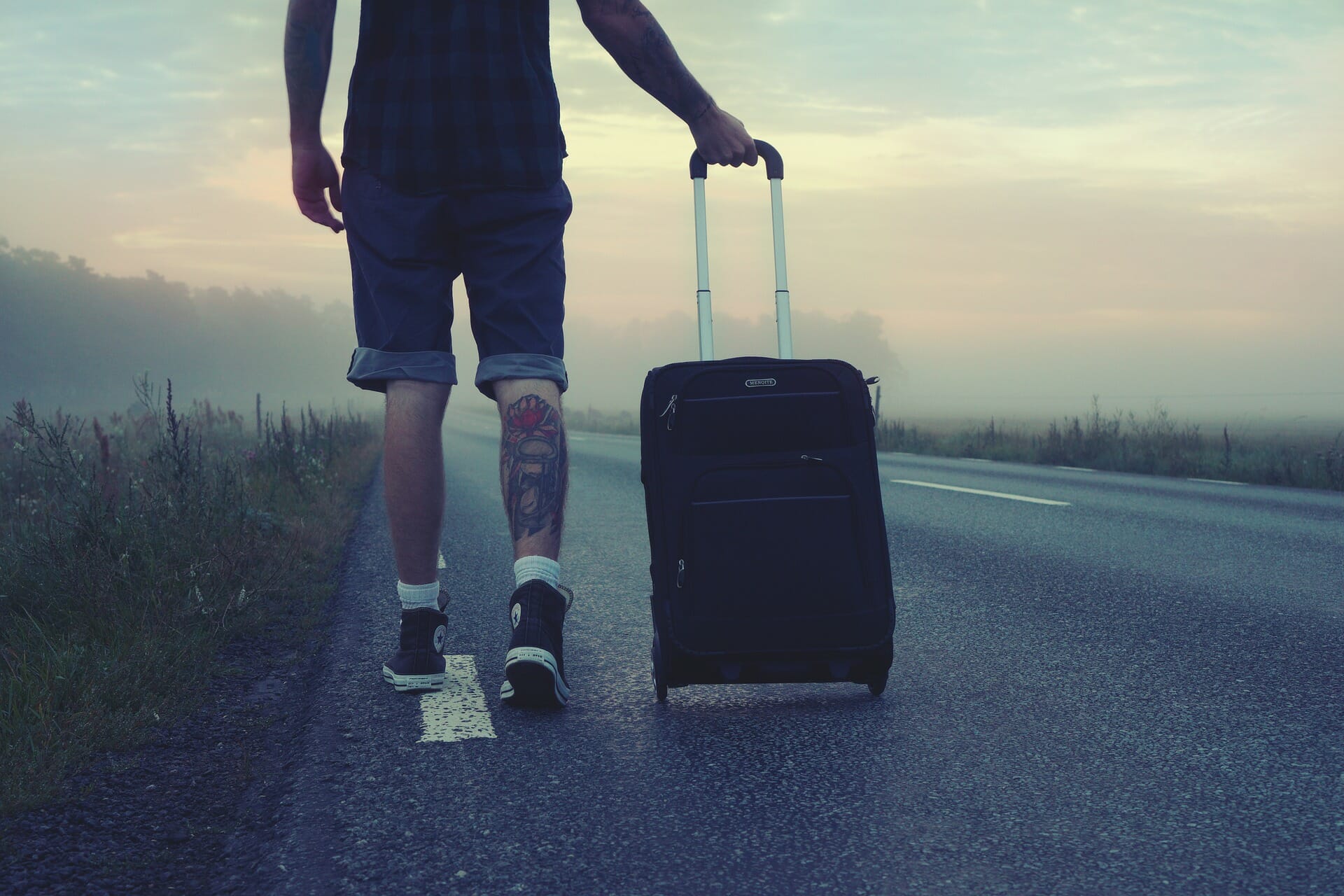With most airlines charging $50 or more round-trip to check a single bag, savvy travelers are packing lighter.
But packing light can be a challenge for a busy writer.
How do you lug all your essential writing gear and inspiration along when you’re headed out of town? Whether you’re headed to visit family, check out a new city or enjoy a DIY writing retreat, these tips can help you plan ahead to make your packing as painless as possible.
1. Be realistic about how much work you’ll do
Before you go on your trip, make a plan for what you’ll actually do while you’re traveling.
No need to pack for 100 hours of work if you’re only going to have time to work for five. Be realistic about how much time you’ll actually have to work.
While it’s easy to envision hours of uninterrupted writing bliss on a flight, it’s easy to get distracted by the snores of your neighbor, the toddler kicking your seat or a bit of turbulence lulling you right to sleep instead of delving into your latest writing project.
2. Bring the essentials
How do you condense an office’s worth of gear, equipment and supplies into a carry-on sized bag that’s crammed with all the other essentials of travel?
First, start with the most important things.
- Laptop: Your laptop is generally your most important (and most expensive) piece of writing equipment. Some people prefer to travel with their main machine, but I travel with a small lightweight portable laptop that I use mainly for traveling and working outside.
I was able to purchase it very inexpensively several years ago, so I’m not too worried about something happening to it on the road. Some people may prefer working from a tablet. Whatever you need, be sure to bring it with you (and don’t forget the charger!).
- Reference materials: Depending on the type of work you do, your reference materials can take many different forms. A journalist may have interview notes and recordings, while a scientific writer may have research studies and a fiction writer might have character notes. Plan the projects you’ll do ahead of time and make sure to have the right reference materials with you.
- Notebook and pen: Even on trips where I don’t bring a laptop, I always have a small notebook and a pen. I get the best story ideas on trips, from the culture of a city to interesting characters I meet along the way. You also never know when you’ll get ideas for a novel or character.
3. Back it up
Make sure you have your work backed up.
Bring a flash drive and keep it somewhere separate from your computer and other valuables. If someone were to snag your valuables, you don’t want to be left without the ability to get any work done. It’s much easier to find a computer to borrow (or an internet cafe to use) than to try and track down the files you need unless they’re backed up.
Also, be sure to have everything you may need backed up online as well.
Email important documents to yourself, use Dropbox, or other forms of file storage to make sure you can access files if your computer (or flash drive) crashes or is lost. Be sure to memorize your passwords or use a password-tracking app if you don’t already know them.
4.Go digital
Instead of lugging hard copies of valuable resources along on your trip, take digital copies instead.
At home, you might consult hard copies of the Writer’s Market, favorite books about writing and other research and reference materials.
But with limited space, it often makes the most sense to digitize. Save articles and resources online, subscribe to the online versions of resources, and take notes from other resources and bring those with you.
5. Bring travel-writing essentials
Even though you’re traveling light, be sure to bring anything you’ll need to transform your trip into a story.
If you’re a travel writer, make sure you bring any information you have on local contacts (including Tourism Board connections), restaurants to check out, and sights to see.
Also, be sure to have some way of taking photos. This could be a camera, but many swear by iPhones and other smartphones with built-in cameras. Taking photos along the way can not only help you capture moments, but provide images to sell alongside any stories that come out of your trip. Even if you’re not planning a working vacation, sometimes story ideas have a way of popping up when you least expect them.
Having photos can also help when you’re trying to recollect specific details and set a scene when you’re writing later on.
6. Safeguard your gear
Now that you’ve spent all this time selecting what to bring, be sure to take steps to safeguard it.
Make sure you carry your most important items (like your laptop and backups) on the plane with you. Sure, most checked bags arrive on time just fine, but you don’t want to take the chance that your important writing gear ends up lost or damaged.
The last few flights I’ve been on have been packed, and the last few passengers to board were required to check their carry-on bags. Just in case this happens to you, make sure you have your irreplaceable items stowed safely in a bag that can fit under the seat in front of you.
If you bring expensive gear with you, consider travel insurance or checking your current insurance policies (such as homeowner’s, renter’s, or automobile) to see if they’ll cover your valuables.
Happy traveling this holiday season and beyond!
What else would you add to this packing list, writers? Let us know in the comments.







